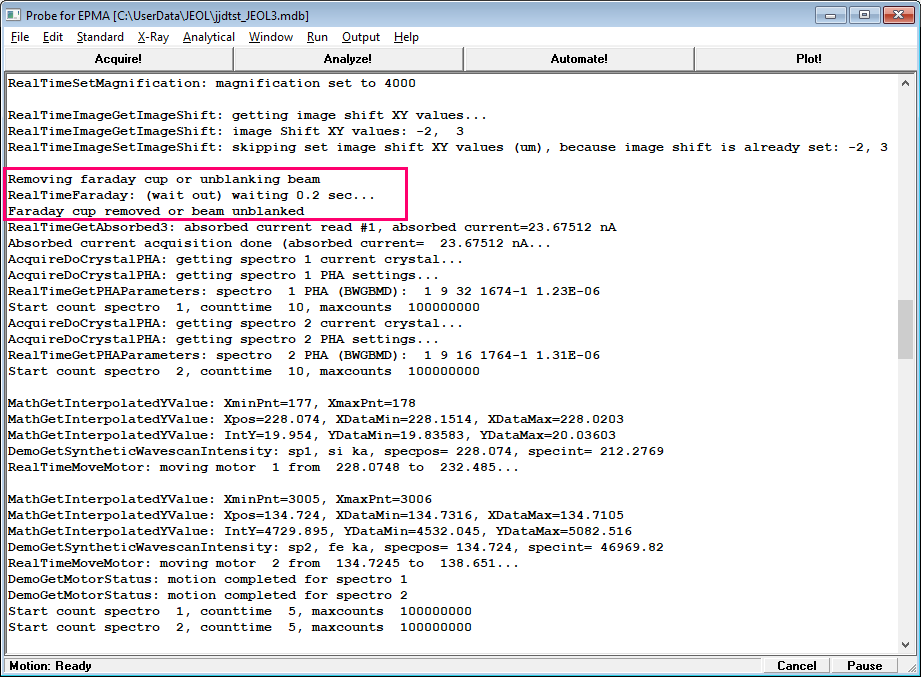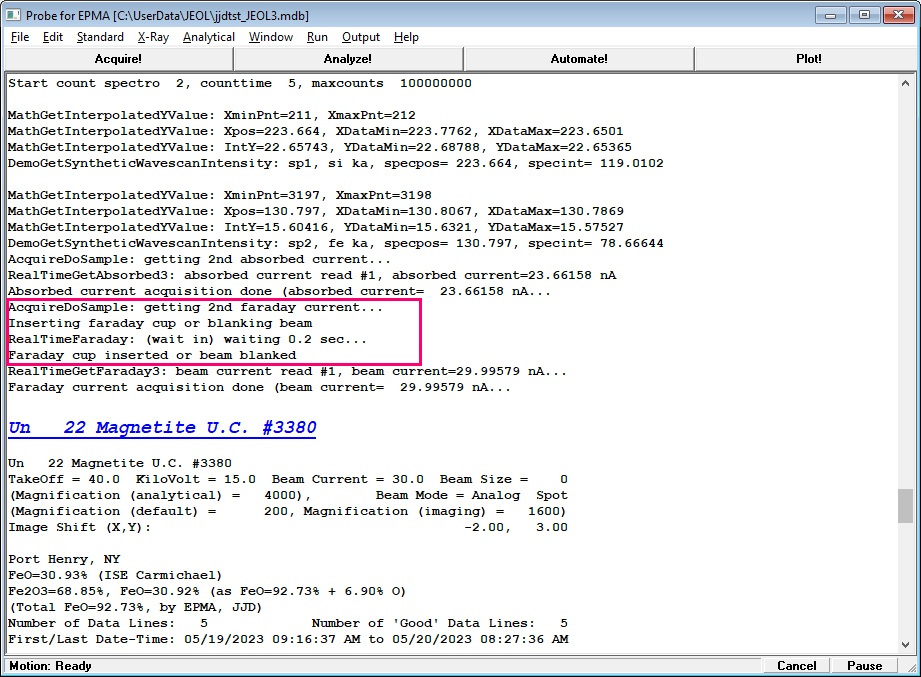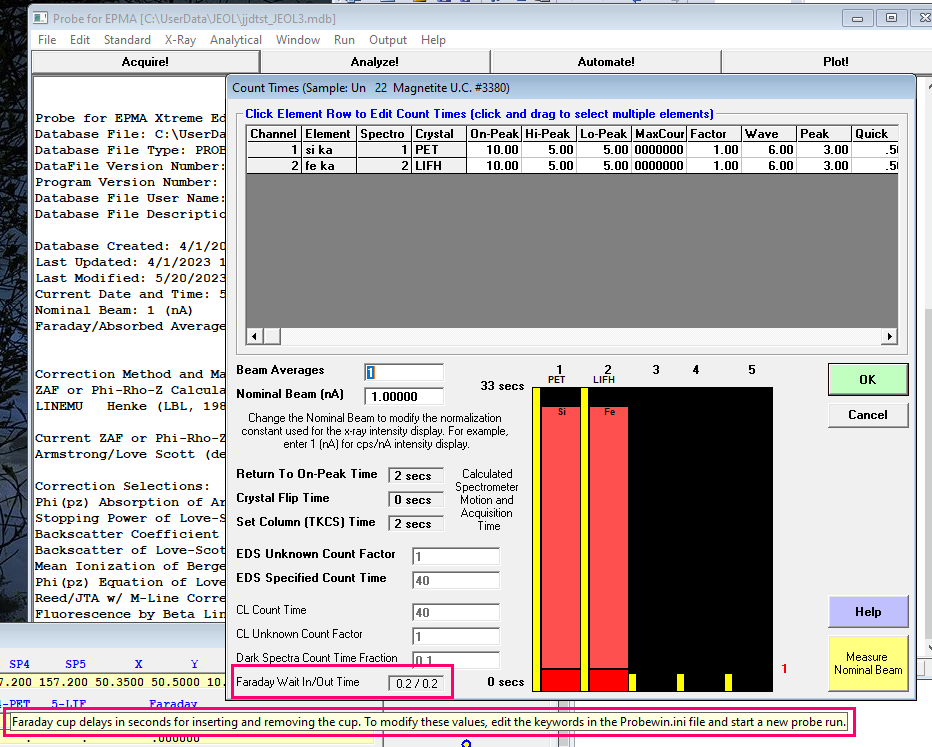This thread has disappeared for some reason. Recall the problem with low beam I being recorded during automated acquisition on a JEOL 8530F? Suggestion was to change the waitonfaraday = 2 to 2.2. I have now increased this to 2.3 as the system is still recording values less than the beam current set for the analyses. Eventually I hope to arrive at a value that works!!
Edit by John: Try doing manual beam current acquisitions using the Faraday app. Try a beam measurement both with the cup in and with the cup out and increase the Probewin.ini FaradayWaitInTime until they are within precision- remember to restart Faraday each time you edit the INI file.
JEOL EPMA instruments for some reason seem to require a good 2 or 3 seconds for the picoammeter to stabilize after inserting the cup. But the exact "waitin" time value varies from instrument to instrument, and of course we wouldn't want to have it be any longer than necessary. For this reason all JEOL instruments should be tested as described above using the Faraday app, or if testing using Probe for EPMA, please continue reading...
We recently had a user who was trying to adjust the Faraday Cup insert/remove delay times or as we call them, the "WaitIn and WaitOut" times on their new JEOL iHP2100F instrument. The problem was that they edited the Probewin.ini file for the FaradayWaitInTime value, but did not create a *new* run to properly test the new Faraday "WaitIn" time value. The problem is that Probe for EPMA stores the value read from the Probewin.ini file and then utilizes that every time the old run is re-opened.
Therefore to test the newly edited FaradayWaitInTime (or FaradayWaitOutTime for absorbed current measurements), one should create a new probe run (without using the Load File Setup button!), which then loads these keyword values from the probewin.ini file only. And each time the FaradayWaitInTime value is edited in the Probewin.ini file, the user should start a new probe run to re-load and test this new value.
That is why using the Faraday app might be the easier way to go for testing these delays.
But that reminded me that there is a to see the current FaradayWaitInTime delay for the current run: and that is to acquire a data point with DebugMode turned on from the Output menu. Then one will see this output when the cup if first removed and measuring absorbed current (if that option was turned on):

After acquisition the cup is closed and the 2nd Faraday cup reading is performed as seen here:

In this case both the FaradayWaitInTime and the FaradayWaitOutTime values are set to 0.2 seconds.
But just to make things even easier, we decided to modify the Count Times dialog and so now both these Faraday delay values are displayed as shown here:

Just use the Help | Update Probe for EPMA menu to update as usual...